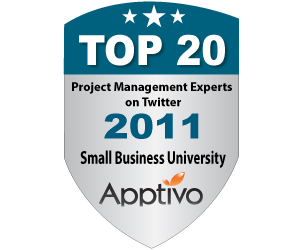I recently interviewed Paul R. Williams, Leader of Project Management, PAi, to talk about how PMOs add value to the organization. Today, PMOs are a strategic imperative for the C-Suite to deliver projects aligned with key strategic initiatives. Project Managers are in high demand today; Williams will give us keen insight into recruiting, training and retaining key program staff.
Williams is speaking at the upcoming
ProjectWorld & World Congress for Business Analysts 2014 conference in Seattle. He will be presenting a session entitled, “Leveraging Visual Thinking in Project Management.”
Check out what Williams had to say:
IIR: As a leader in your organization how do you promote IT and the PMO to the C-Suite?
Williams: I like to position the PMO to the C-Suite as a “Strategic Execution Team.” In other words, it is the role of the PMO to plan and execute the key strategies identified and sponsored by the C-Suite (and their direct reports). This only works, however, when the PMO has sufficient access to senior leadership and visibility to the strategic roadmap.
IIR: What are some of the challenges you face as a leader in your organization?
Williams: Resource management. It seems there’s always too much work and not enough, or the right kind, of people to get it done. Very few organizations have a good handle on resource supply vs. demand management so there is a tendency to over commit to what can get done. Poor resource management results in too much “work-in-progress” which has a tendency to show up in project status meetings as scheduled work that is constantly being pushed ahead. Organizations need to drastically improve upon how much actual resource capacity exists at a given time, what the high-confidence demand estimates are for that timeframe and how to reconcile any differences.
IIR: Training and retention of project management staff is important; how do you support the personal development of your project staff?
Williams: I like to encourage my project management staff to achieve a certain amount of continuing education hours, regardless of their certification requirements, within their performance plan. This lets them know that the organization considers their professional improvement as a core value. As a frequent writer and speaker on project management topics, I also encourage my team to get involved in the greater PM community and share their voice and ideas.
IIR: In PMI’s 2014 Pulse of the Profession; it suggests organization will be more successful if they focus on people, process and outcomes. How do you lead your PMO to demonstrate your success?
Williams: Organizational success begins and ends with people who focus on the outcome. The process is only the instruction manual or roadmap, but success happens when dedicated, educated people focus on exactly what needs to get done. Successful Project Managers ensure they understand exactly what “done” looks like for the project and then works backwards from there to ensure a successful outcome.
IIR: What four tenets does your PMO organization promote to demonstrate the value of project management in your organization?
Williams:
> Trustworthiness: Project Managers are essentially windows into the reality of the project, both good and, especially, bad. They report based on facts, ensure all voices are heard and are not afraid to have the “courageous conversation.”
> Accountability: Project Managers “own” the projects they manage and are expected to collaborate with whoever is needed to ensure the project’s success.
> Fiscal Responsibility: Project Managers are responsible for the effective and efficient management of the organization’s financial investment in the project’s desired outcome and/or benefits.
> Leadership: Project Managers are leaders of the organization. They think strategically, resolve conflict, make difficult decisions and have the organization’s best interests at heart.
IIR: What advice would you give to someone who wants to manage a Project Management Office?
Williams: A PMO Leader is the sum of many parts: HR rep, financial guru, wordsmith, negotiator, facilitator, peace-maker, arbiter, decision-maker, process wonk and sympathetic ear. While having expert knowledge of project management discipline is certainly a pre-requisite, most people who actually lead PMOs are those who have mastered the soft-skills of being a leader, not a “follow the playbook” manager. Understand the needs, wants and challenges of all areas of the organization to become a valued, trusted business partner.
IIR: A visual thinking concept is a form of communication; tell us about some key tools and techniques you would recommend for projects managers?
Williams: In my presentation on this topic, I’ll explore some of the best visual thinking tools that project and business analysis professionals can apply in their work such as mind mapping, storyboarding, Kanban boards, as well as, the effective usage of charting, dashboards and info graphics.
IIR: Project Management has become increasing important to organizations over the last 20 years; from your point of view what are still some of the challenges for practitioners?
Williams: There are many people who still don’t understand the tremendous positive impact that professional project management can provide for organizations. Some still see us as meeting schedulers, note takers or task list creators, while others see the role in a more negative light such as governance overlord, process cop or task master! It is up to all of us in the project management profession to reverse these stereotypes by acting with integrity, providing education about our roles and duties, demonstrating the benefits of our involvement (both quantitatively and qualitatively) and leading responsibly.
IIR: Social media has made a big impact in the last 5 years; what tools do you use and recommend for project managers?
Williams: I use a number of sites, multiple times per day, to keep up with the latest news, ideas, blogs, etc related to project management, leadership and overall news. Zite is my “go-to” blog and news aggregator that keeps me informed on all of my important topical areas of interest. Twitter is my lifeline for real-time news and insight to what my peer group thinks is important to share. LinkedIn is where I stay connected to those important to me, my career and my profession. There are a few project management related mobile apps available, but I’m still waiting for the “killer” PM app…maybe I’ll write one!
Williams will be speaking at ProjectWorld & World Congress for Business Analysts 2014, taking place in Seattle, Washington September 22-24th at the W Hotel. The 2014 program is designed with courses for all training levels, a robust agenda, and most importantly tangible lessons which you can begin implementing the day you return to your office, making you even more valuable to your organization. PW&WCBA offers attendees 36 PDU/CDUs - that's more than half of the required credits necessary to maintain your certification in just one place.
To learn more or register for the event, click here:
http://bit.ly/1jtZtxB






